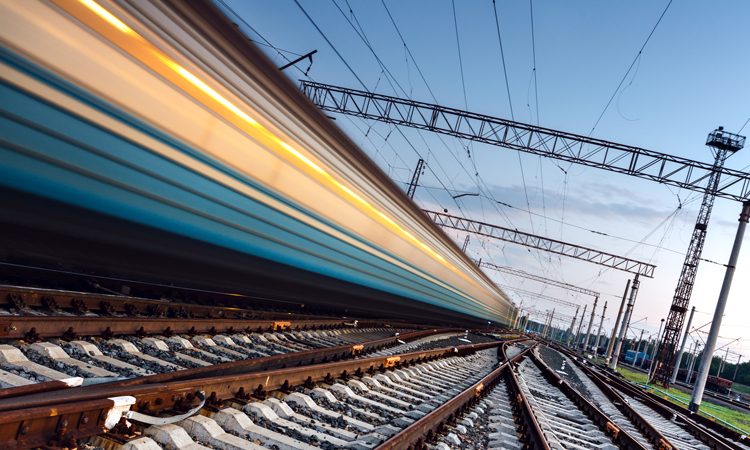High-speed rail: State of play and vision for European development
Posted: 30 January 2017 | Violeta Bulc - EU Commissioner for Transport | No comments yet
As European Commissioner for Transport, Violeta Bulc shares with European Railway Review that one of her first objectives is to help build a Single European transport area that can strengthen the European Internal Market and facilitate the transition towards low-emission mobility. Here Violeta writes that high-speed rail has enormous potential to make this a reality, especially following the recent adoption of the Fourth Railway Package.


High-speed rail as an instrument to decarbonise transport
The European Union has a long-standing commitment to fight climate change, which is one of the most pressing challenges we face. Transport has a significant impact on our climate as it currently accounts for 23% of all European greenhouse gas emissions. With transport demand projected to steadily increase, so too will emissions. As a result, the sector could become the largest emitter of CO2 after 2030 if nothing is done. As a result the European Commission adopted in July 2016 a comprehensive strategy to decarbonise the European transport sector and transition to low-emission mobility. Truthfully, most of the action will necessitate focus on road transport, which represents around 70% of all transport emissions. However, incentivising a shift towards lower emission transport modes such as rail is an integral part of our strategy. In this respect, the case for high-speed rail is compelling; all the more since our electricity is increasingly generated from renewable sources. By 2030 half of European electricity should be renewable. The share of renewable electricity has already increased to 29%, and accounts for over 85% of Europe’s generation investments.
High-speed rail in Europe today
While only 3.4% of the European rail network is high-speed, 110 billion passenger-kilometres, equivalent to 26% of all European passenger-kilometres, were transported on high-speed lines in 2014. With 2,871km in current operation and 1,200km under construction, Spain has the second largest high-speed network in the world, behind China. The European development of high-speed lines has recently been showcased with the opening of the second phase of the LGV Est, connecting the French high-speed network to the German one toward Frankfurt and also to the Italian Milan–Brescia high-speed line. The Tours–Bordeaux high-speed stretch represents the largest public-private partnership on railway worldwide, showing the attractiveness of the European high-speed model for the business sector and its potential to trigger investments. This attractiveness and competitiveness is acknowledged by several success stories: high-speed gets by far the largest modal share in the connections between Paris, Brussels and London as well as Paris–Lyon, and Madrid–Barcelona. The connection Milan–Rome amounts to more than 60% of the total share, leading Ryanair to completely abandon the Milan–Rome route thanks to the opening of the rail segment to competition.
A network expending with the financial help of the EU
In Denmark, Germany, France, Italy and Austria, 1,200 kilometres of high-speed lines are under construction with new lines planned in the United Kingdom and Sweden. In addition large sections of the conventional rail network are, or will be, upgraded for use by high-speed trains. By 2030 the planned high-speed network could extend to over 30,000km. Building high-speed lines, however, requires significant investment. The Commission is offering financial support to a number of key cross-border projects, such as the Brenner Base Tunnel or the Lyon–Turin tunnel. While the speed will be lower, Rail Baltica is certainly worth mentioning too as it will connect the three Baltic States to Poland and the rest of Europe. By 2020 the European Union is planning to invest a total of €1.24 billion in the project through the EU funding programme for Transport Infrastructure (‘Connecting Europe Facility’). Besides the Connecting Europe Facility, the Commission established the Investment Plan (also known as the ‘Juncker Plan’) with the aim of mobilising at least €315 billion in investments with maximum private sector contributions. In September 2016 we proposed to double the Investment Plan’s financial capacity and focus on those projects that contribute to climate action and on those involving cross-border infrastructure investments. There is therefore clear room for high-speed rail projects.
The Fourth Railway Package: A boost to railways
2016 marked the adoption by the two EU co-legislators (the European Parliament and the Council) of the entire Fourth Railway Package. I am confident that both the technical and market pillars will have long-term benefits for high-speed rail.
The overall rationale of the market pillar of the package, which was formally adopted in December 2016, is to make European railways more attractive, innovative and competitive by gradually opening domestic markets to competition. More specifically, from December 2020 onwards all EU railway undertakings will – as a general rule – be able to operate ‘open-access’ domestic passenger services in competition with incumbent operators. High-speed services typically fall under this category. We expect that this competitive pressure will make railways more responsive to market and consumer demand, and therefore more attractive to passengers. We may see rail operators compete against each other on their merits but also innovate with new business models offering different levels of services to customers. Why not have more ‘low-cost’ train companies? Ouigo or Izy have already invested in this segment. The market pillar will also encourage the railway sector to develop a system that enables easy reservation of tickets for train journeys across Europe. Such a system should of course be non-discriminatory and allow tickets to be purchased for all railway operators that wish to participate. I am confident that the sector will seize this opportunity and come up with user-friendly solutions very soon.
As for the technical pillar, this introduces a number of positive changes. As of 2019, the European Union Agency for Railways will become a ‘one stop shop’ for vehicle authorisations and safety certification of railway undertakings. This will reap important savings (several million euros per international train) and reduce the lead time to have a train up and running, thus increasing the return for investment for high-speed. The technical pillar will also streamline the large number of national rules. These rules create a risk of insufficient transparency and disguised discrimination for new operators, which is a serious risk for new investors. Reducing and simplifying the current rules will move us closer to a Single European Rail area and facilitate both high-speed and conventional cross-border traffic.
Working towards a European approach to rail security?
Following the attack perpetrated in a Thalys train in August 2015, rail security has become a growing concern across the EU. Unlike the aviation sector, there is currently no European framework for rail security, even for international and high-speed trains. Terrorism is a challenge faced by all European nations and only a coordinated response can successfully address it. For this reason, the Commission has been cautious of implementing unilateral rail security measures introduced by one or the other Member State. My view is that we should rather move towards a common European approach.
To this end, we have placed the topic on the agenda of all the latest meetings of the 28 EU Transport Ministers (known as the ‘Transport Council’). We have also initiated a study investigating the options available to enhance the security of high-speed and international railways. This study was recently completed and I was able to present it to the Transport Council held on 1 December 2016. It concluded that the most effective way to improve rail security is a combination of mandatory requirements and guidance at EU level. As a follow-up, the Commission services are currently looking into risk-based and proportionate measures that could be proposed as part of a European framework for railway security. Obviously, it will have to remain flexible enough to take into account the different levels of threats in the Member States.
In summary, I am convinced that high-speed rail has never been more relevant than today as we are stepping up our efforts to decarbonise the transport sector. High-speed rail is very much a European success story and I am confident that the action of the European Union, both with regard to regulation and investment, will contribute to future success. I wish the sector all the best for 2017.
Biography










